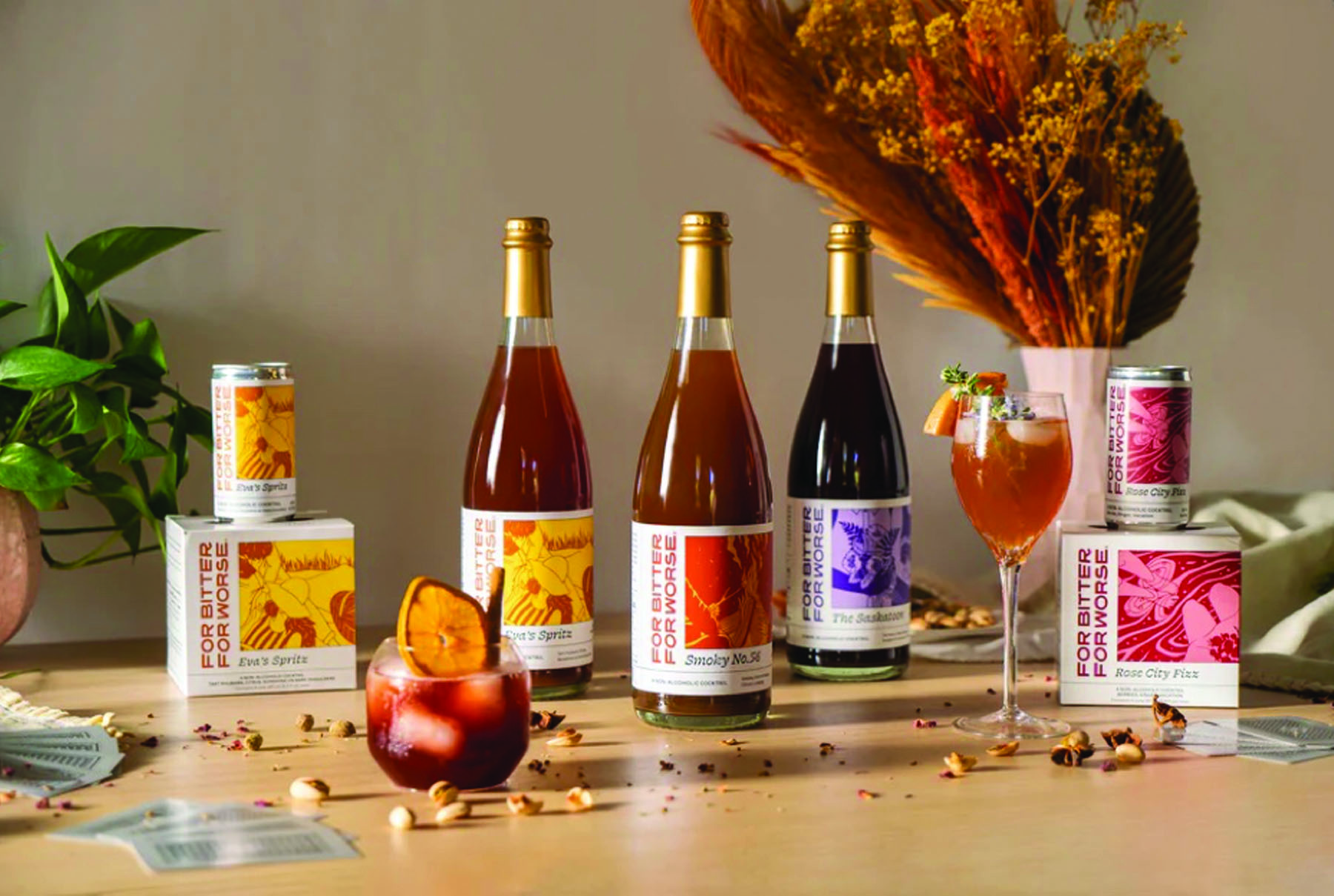A few years ago, I ordered a martini at a restaurant in Paris. The drink arrived in a pretty, delicate glass, along with a slice of lemon, and I prepared myself for the cool, clean sip that would awaken my senses on that steamy summer evening. What I tasted instead was a dry, floral …vermouth? Not the bracing cocktail I was expecting. It turns out that a martini in France is a very different drink than what we consume in the U.S.—and there are guides on how to order an American-style martini in France, which would have been helpful to me before that evening—but what I learned from the experience is that I enjoy the vermouth-forward cocktail. It was light, refreshing, and easy to drink, with the added benefit of lower alcohol.
The low/no-alcohol sector has grown tremendously in the past decade, driven by people seeking healthier alternatives to traditional drinks. Fortunately, the quality of the products has also improved—gone are the days of alcohol-free wine that tastes like watered-down grape juice. But can social drinking be just as enjoyable without alcohol? Beverage companies are responding to that question by creating products that respect the elements we appreciate in our well-crafted cocktails—complex, sophisticated flavor profiles and attention to detail demonstrated by proper garnishes and beautiful glassware.

“It’s all about balance,” says Kat Dunn, owner of Padrona, a gem of a cocktail bar in Hudson, NY where she’s been a fixture for over a decade. Her approach is kitchen-oriented, “a very ‘cooking’ way of looking at things. Every cocktail, whether it’s low-proof or no-proof, it’s all about balance. Sometimes there’s an umami quality, but it’s sugar, salinity, acidity, and it shouldn’t taste like any one ingredient, but a combination of all of them.”
Dunn has been incorporating booze-free drinks into her cocktail program for the past decade. When she was behind the bar at Fish and Game, Zak Pellacio’s acclaimed restaurant (now closed), she had to figure out how to best serve the occasional customer who didn’t want to drink alcohol while maintaining the level of quality and aesthetic that the restaurant required. “Sometimes, I would know that someone was with child before their friends and family did. They’d come up to me and say, ‘Listen, I can’t tell anyone. It’s only been a month. Can you make it look like a cocktail?’ and I was like, I got you.” Dunn explains, “The drink would always be in a champagne glass or a martini glass, and I really took pride in that I knew first. That is amazing, right? Having that faith in me. So, I always went above and beyond to try and make it not only look like a cocktail but taste like a cocktail and be special. Not just be a grown-up lemonade.”
Of course, it’s one thing to have an experienced bartender create a balanced low or no-alcohol drink for you, but it’s another situation when you’re making one at home. With all the new products flooding the market, where do you start? Dunn acknowledges that you must allow some room for error to figure out what you like. There are a few brands that have become go-tos in her bar. “For Bitter or Worse are making some great Amaros, Drink Monday is doing some decent spirits, as is Lyres.”

She confesses that she expected the Lyres Amaretto to taste like almond extract, but it tasted like a real amaretto. She has a Lyres Amaretto Sour on her menu and adds, “The St. Agrestis Phony Negroni is okay, but if you add a little bit of the Drink Monday Gin, it’s actually really good. Most of the no-alcohol spirits are things I would mix instead of drinking on their own.”
A no-alcohol cocktail is self-explanatory, but what does it mean to be “low” alcohol? Dunn prefers to keep her low-proof drinks under 30 percent ABV. Her Upside-Down Martini flips the martini equation to accommodate that—more vermouth, less gin. “Vermouth is at 14 percent, so that’s three ounces of the drink, and then there’s half an ounce of gin. You’re looking at 22 percent alcohol. That’s where I prefer to keep mine. I think that’s a safer number.”
It also comes down to measurements and, as noted, balancing what goes into the glass. If a cocktail tastes right with a higher-proof spirit, she reduces the amount in the glass to keep it manageable for customers without sacrificing taste.
In cities like New York, LA, San Francisco, and Portland, ME, a place Dunn says is ‘crushing it’ in terms of food and beverage, low and no-alcohol drinks are becoming staples on the cocktail menu. And that’s a very good thing. Dunn describes a moment when a friend told her that Padrona was a place where people in recovery feel comfortable socializing because there are delicious, alcohol-free adult beverages on the menu. “I want people who don’t drink to be as comfortable here as people who drink. I want people who are drinking less to feel comfortable.”
Please don’t call it a mocktail, though. “I don’t like the word mocktail. I don’t think it purports how good they are or reflects the time and effort put in. As an adult, I wouldn’t want to order one.”
When she’s not working, Dunn drinks wine and appreciates a 50/50 Martini, equal parts gin and vermouth. “To me, the juniper and herbal notes of the gin plus the herbal notes of particular vermouth are just a match made in heaven. It also has a lower ABV, so I can have a second and not feel guilty about it.” Just like the martini I accidentally had in France. J’en aurai un autre, s’il vous plait!
To get the most out of a low-alcohol cocktail, Dunn suggests starting with a classic like The Coronation, which first appeared in The Savoy Cocktail Book in 1930. The main ingredients are dry vermouth and fino sherry, which give the aperitif a lovely balance between herbal and floral (the vermouth) and crisp and dry (the sherry). Add a dash of maraschino liqueur for tart sweetness and a dash of citrus from orange bitters, and you’ve got the complexity of a proper cocktail.
THE CORONATION
Ingredients:
2 ounces dry vermouth
1 ounce fino sherry
2 dashes maraschino liqueur
3 dashes orange bitters
Garnish: lemon twist
To make:
- Add the dry vermouth, fino sherry, maraschino liqueur, and orange bitters into a mixing glass with ice and stir until well-chilled
- Strain into a cocktail glass
- Garnish with a lemon twist
Non-Alcoholic Brands We Love
For Bitter For Worse
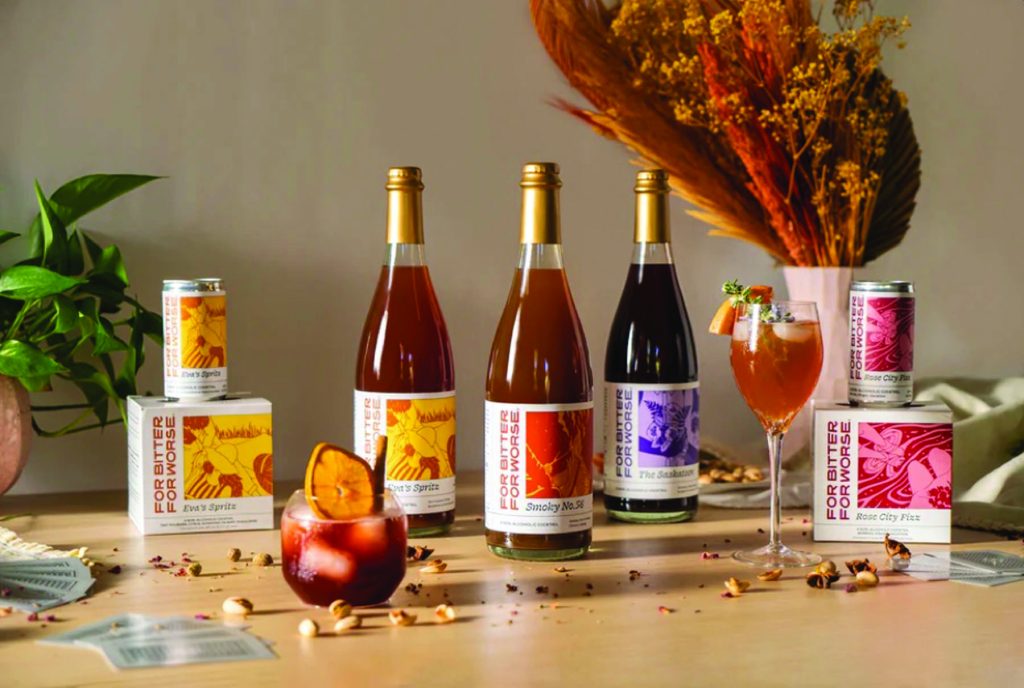
Husband and wife team Shelley Elkovich and Jeff Heglie started FBOW after Shelley was diagnosed with a rare neurological condition and gave up alcohol. She missed the ritual of happy hour and started experimenting, eventually launching the brand in 2020. They currently offer four varietals—two sparklers—Eva’s Spritz and Rose City Fizz, Saskatoon, a red wine alternative, and the Smoky No. 56, a riff on whiskey.
Lyres Spirits
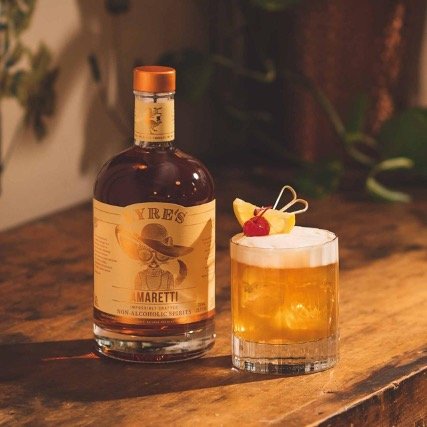
Lyres has a portfolio of spirits like Dry London, Agave Blanco, American Malt, and Highland Malt, all non-alcoholic riffs on the traditional. Our favorites are the Agave Blanco, which is a great base for a booze-free margarita or Paloma, the Dry London Spirit for a low-alcohol sparkling martini (just add 60 ml of Prosecco), or the aforementioned Amaretti for a cocktail that mimics the Amaretto Sour.
Kin Euphorics
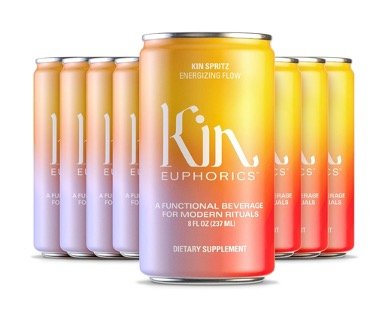
Kin is a “non-alcoholic, functional beverage, designed using ingredients that nourish mind and body.” It’s made with adaptogens and nootropics, ingredients designed to reduce stress and buoy your spirit. Whatever the benefits, Kin products are delicious and there’s one to suit every mood, from Actual Sunshine, a drink to ease you into the day, to Dream Light, a nightcap beverage aimed to help you sleep. Our favorite is the Kin Spritz, an easy-to-drink sparkler that mimics an Aperol Spritz without the sugar overload and booze-induced lightheadedness.
Curious Elixirs
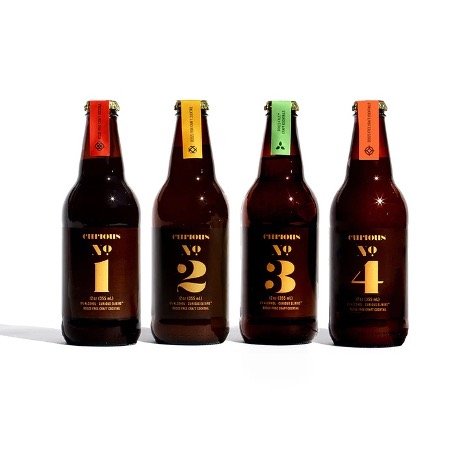
Curious Elixirs are booze-free craft cocktails, served in stylish dark bottles that elevate the experience. Founded by an ex-bartender who started tinkering in his kitchen after deciding to create a non-alcoholic drink as good as one he’d find in a bar. Curious offers a variety of flavors to accommodate different palates as well as a rotating monthly variety pack to keep things interesting. The website also has a flavor quiz to help you find the right bottle.
Seedlip
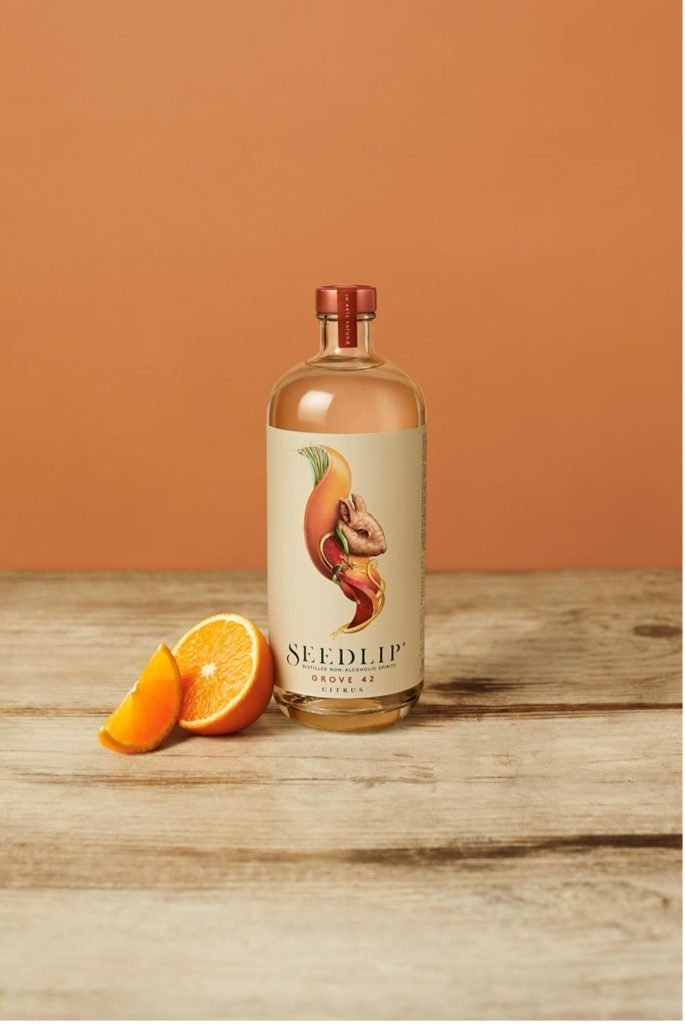
British beverage company Seedlip was founded in 2014 by Ben Branson, a naturalist who tinkered with plants from his garden and created a non-alcoholic spirit with a complex flavor profile. Seedlip is delicious on its own or with Fever-Tree sparkling or tonic water. You can dip your toe into the world of Seedlip through their cocktail kits (we like the PaNOma).

